What’s the best way to get cash while cruising? The answers depend on where you’re cruising, but we’ll assume for purposes of this post that you’re not cruising domestically in the USA where getting cash is less challenging.
First, we always have cash aboard. The amount depends on where we’re cruising and how long we expect to be away from civilization. It always amazes me when you hear a frantic plea on the morning SSB net for an ATM in somewhere in a remote cruising locale like the San Blas Islands. At least at the time we were there, there was NO ATM in the San Blas Islands … and everything we read, the cruising guide, other cruiser blogs, talking to others that were coming the other way and had just been in the San Blas. We KNEW the two challenges were no cash to be had and we could not get a propane tank refilled because US fittings don’t match. So we had very little … make that NO sympathy for cruisers who didn’t bother to do their homework.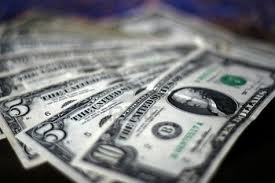
Having said that, things happen. When we arrived in the San Blas Islands from Cartagena, Columbia, we were provisioned for a couple of weeks and intended to make a run to Linton, Portobello or Colon to re-provision. But Mother Nature interfered and we were stuck in the San Blas due to huge seas and the Colombian LO windmaker blowing 30+ onto a lee shore to get there. No one left the San Blas and the normal supply boats did not make the trip because it was too dangerous. It was a good thing we had cash because you can always use it, at least in the countries we’ve been in. We prefer to use local currency when possible because the exchange rate for US cash when you’re forced to use it in an emergency is usually significantly less than if you’d exchanged the money at a bank or gotten local cash at an ATM.
Here’s how we did it when traveling outside US waters: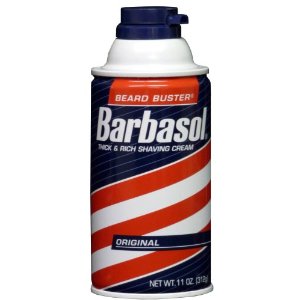
1. Cash. We took a bunch. The first year, we took most of it in $100 bills — BIG mistake. Nowhere but a bank will be able to change them. $50’s are even worse because apparently there’s a huge counterfeiting problem with $50’s and sometimes we couldn’t get them changed even in a bank. Smaller bills are MUCH better. Often even $20’s are too large to be changed locally, so we took primarily $10’s/$5’s & $1’s. Unfortunately that takes more space, making stashing the cash more challenging. Local merchants were really good at saying they didn’t have change — say you were trying to buy something that cost $15 US and you only have a $20. Often they’d just shake their heads & say they didn’t have change in hopes you would just say “oh, no bother, just keep it”. And it happens often. SMALL BILLS!
The key to taking cash is to divide it up into small caches so if you happen to be robbed, hopefully it won’t all be taken. We left some cash out on top of the nav station and the one time we were robbed, I guess it worked as a diversion… they took our electronics, cameras and the like but the only cash they took was that cash laying out on the nav station.
There are some innovative safes available these days … here are some possibilities on Amazon … everything from fruit cans, to soda cans, to look-alike books, bunches of ideas. We didn’t have any of these but came up with some innovative hiding places — NOT in the mattress! The only problem we had was not FORGETTING where the cash was stashed! Every now and then we still stumble on a bit from the early days — WOW, FREE MONEY! The last few years we were outside the US, we used three or four places exclusively to overcome the age-related forgetfulness challenge. 🙂 Since we’re back in US waters, we don’t worry about stashing cash these days, so if you’re thinking of finding some aboard Winterlude, don’t waste your time!
2. Foreign Currency. We never bothered to try and get foreign currency while still in the US since the exchange rate usually worked out much more in our favor locally and we didn’t have to pay the exhorbitant fees some banks want for getting foreign currency. The one exception was the year we needed Euros and we did order those from our local bank.
3. Travelers Checks. I continue to see some sites recommend travelers checks. We took some the first year we were cruising. And literally could never get one cashed anywhere. And they were American Express and VISA, both kinds. Blah, we would NEVER recommend anyone take travelers checks unless you’ll be in a major metropolitan area, then maybe someone would accept them. But that’s not our experience.
4. Currency converters … know the latest exchange rates for wherever you are so you aren’t taken advantage of. Likely you won’t be able to get the very best exchange rates, but at least you’ll know if you should look around and whether you’d be saving six cents or lots of dollars… Is it worth it or not? Your call, but know what the exchange rates are! If you don’t have wifi access, often local cruisers can give you the same or better information! Here’s a good currency converter link:
4. Credit Cards. We chose to get one credit card, a VISA, which we used exclusively while cruising. Our reasoning was that any exposure we had would be isolated to that one card. And this strategy worked well for the first 5 years we were in the Western Caribbean. Be SURE to call and let them know where you’ll be traveling, approximate date ranges, so that it’s noted in the record if the fraud department decides to become concerned when the card is used for one month in one country and a week later in another country.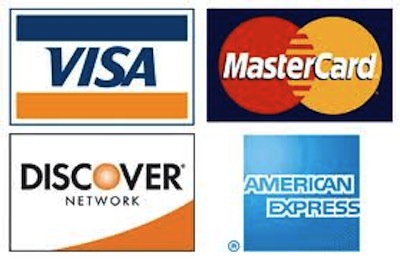
IF someplace will accept credit cards, it’s most likely VISA, although we’ve seen more Mastercards lately. Discover and American Express were almost NEVER accepted anywhere, at least where we’re cruising.
Note I said IF …. often in the smaller countries/cruising locales, credit cards are simply not an option. Hence another reason you must carry cash.
OK, back to Credit Cards. We’d been cruising for 4 years when all of a sudden our normal “out of the country” credit card started getting turned down regularly (embarrassing to say the least in the front of the line at the supermercado in Colon Panama….). We called CITIBank — with our Iridium Satellite phone at $1.25 a minute — ask me if I was HAPPY???), the company we’d had the card with for LITERALLY YEARS – PLUS all our life savings with and a personal friend as our Vice President in charge of our account, but it didn’t matter, no matter what we did CITI turned us down. 🙁 Needless to say. over that and other issues, CITIBank lost our entire business, not that they cared in the least. But it illustrates even if you have someone you trust to make SURE your credit card is functioning perfectly and even though you have your life savings (many many times that grocery bill that you’re embarrassedly standing in line in front of a jillion Panamanians thinking “yeah, damn rich yachties can’t even buy their groceries???”. SO ……
We now travel out of the US with at least two credit cards AND have enough cash on us so in a pinch we can pay cash for the groceries no matter what the exchange rate. 🙁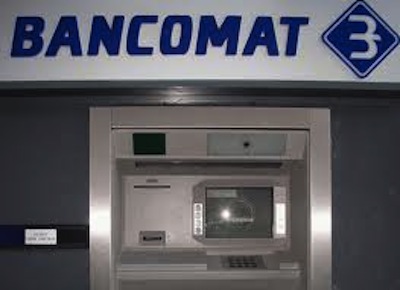
5. Banks. I know it’s a hassle, but we’ve often found that we get the same exchange rate and the same fees, but we can get a BUNCH more money if we go inside the bank and wait in line. Don’t be intimidated, there may well be a scary looking guy in a uniform holding what looks like a serious machine gun in his hands guarding the bank door. He’ll be nice & let you inside. It may or may not be worth it to you, on several occasions we found it saved us a BUNCH of money in fees! Ask other cruisers in your area, they’ll know the best way to do it!
5. ATM’s…. When we “exchange” for foreign currency, this is usually the easiest way. You must do the research ahead of time so as not to get double charged with extra fees — “foreign transaction fee”, local bank ATM fees, etc. One year we had three separate fees — every time we got $100 US out of a foreign bank machine. we were charged almost $20 US!!! That’s another BIG tip — usually the fees are the same, no matter if you get $100 or the largest amount the ATM will allow…. so always know the exchange rates, always know which banks give better exchange rates and ALWAYS get the largest amount of local currency the ATM will allow. Note that the ATM will always suggest amounts, and then say something like “some other amount” – by asking around you’ll know what the locally largest “some other amount” is and use that rather than the suggested ATM amounts which will be calculated to maximize the bank fees they charge you!
We ALWAYS use our credit card, VISA, and never use any account (i.e. Debit Card) that’s linked directly to our checking/savings accounts. We have friends that always use debit cards and have never had a problem, but I’m too paranoid for that. I don’t want any foreign ATM accessing my actual bank account whether for legit purposes or for who knows what kind of mischief!
PLAN AHEAD & BE VERY CAREFUL! Often when you arrive needing currency from a new locale, the ATM’s will be OUT of local currency — especially if it’s a weekend or even worse, a holiday weekend! What a shock to walk up, put our VISA into an ATM and be told there is no money available, the bank is out! Especially if you’re trying to check in to a new country! Try explaining that to Migracion as the reason you can’t pay your fees! Try to avoid checking in to a new country on a holiday weekend or holiday during the week! One random week in Fronteras/Rio Dulce, Guatemala, it took us an entire WEEK to get some quetzales … because the banks were out of money. You’re not in Kansas anymore once outside the US, plan accordingly!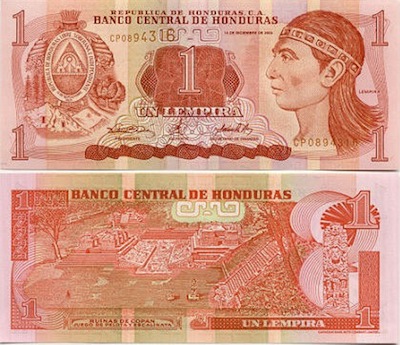
Even if the ATM’s are working for a specific bank doesn’t mean the ATM near you will be working! All kinds of challenges!
And it goes without saying, whenever you get cash from an ATM, be very careful to conceal it before you leave the ATM booth — most foreign ATM’s are not just located out in the open, often they’re in a “booth” in front of a bank or in the middle of nowhere for safety purposes so no one behind you can see what numbers you’re punching in … be careful with machines that are in the open that those behind you can’t read your punched in passcodes!
What else can I say …. don’t flash large amounts of cash in public, locals aren’t used to seeing it and may very well track which boat you’re on and the next time you leave … opportunity theft. Don’t give them the chance!
Any more current tips on money while out cruising, we’ve been back in the US for two years, I’m sure everything has changed! Please leave a comment and share! Cheers! Jan
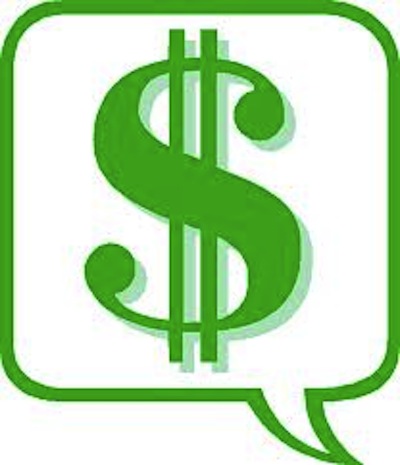













In our experiences so far – Bahamas and Colombia – Mastercard is accepted as often as Visa. American Express is accepted more often than we thought it would be, but only in cities, malls, restaurants that get tourists, hotels. Discover – once in a while. The credit card companies have been very quick to cut us off, even after we warn them that we are traveling internationally. They say this is for our protection, but that’s nonsense, of course – they are just trying to limit their liability. Once, we had three out of four cards denied – talk about embarrassing!
Great advice. Re travellers cheques: never again will we go this route. You mention..maybe in large centres: 2 years ago in Paris (ie large centre) we tried to cash a TC in 3 separate banks and no one knew what they were. In our experience bank machines are the best for extracting $$. Used them exclusively while in Africa last year. Mind you we always went in groups for safety reasons but found ATM’s the best source.
Thanks Kathy! Sounds like you’ve had some great adventures! Cheers! Jan
Yes we have had some great adventures thanks to my husband’s postings in the Canadian military. Our next phase though is sailing. Our first ever boat arriving in April. We religeously follow your posts and those of Boat Galley (yummy recipes from the cook book and such great ideas for equipping our tiny space). Keep up the great info!
Great info!
Good advice for travelers everywhere…
Great advice for land or sea…
As usual Jan, I appreciate the links to your previous blog posts showing up on Facebook … always welcome in my news feed.
While on the topic of using credit cards overseas, they usually come with an “exchange fee” (often 3%). BUT, there are a couple of VISA and Mastercards from banks that are designed specifically for travelers that do NOT charge that fee. If you plan on being out of country and using a credit card regularly, be sure to look for them (ie. Bank of America’s — NEW in 2013 — travel card and Capital One no oversea charge card — I think all of them?). Also, be sure to notify your bank that there will be overseas charges so they don’t lock up your credit line and leave you stranded in that grocery line! 😉
Great post as usual! Very informative! 🙂
Another way I’ve found useful, especially if you larger amounts of cash, is the xoom.com service. Once you set up an account, you can login and send yourself up to $3,000, either in USD or local currency, without having to make trips to the ATM over several days. You have the money sent to a bank of your choosing (listed on their website) and take your personal ID into the bank to pick up the cash. If the money is sent from your bank account, the fees can be as low as $5-6 dollars for up to $3000. One caveat is that their exchange rate might not be as favorable.
Also, I like having a separate bank account with as little balance as possible for my cash/ATM needs. If I know I’ll be needing more cash, say for a new outboard, then I’ll use online banking to transfer the cash to the ATM account that I’m using for overseas cash.
Thanks Doug! New info since we were in the W Carib! Cheers! J